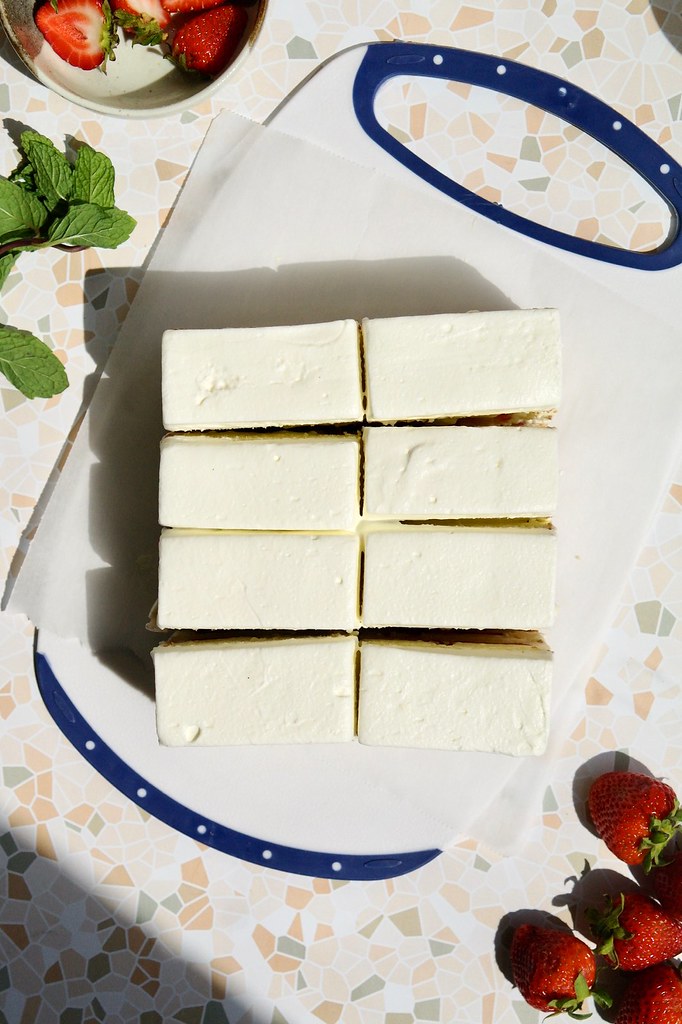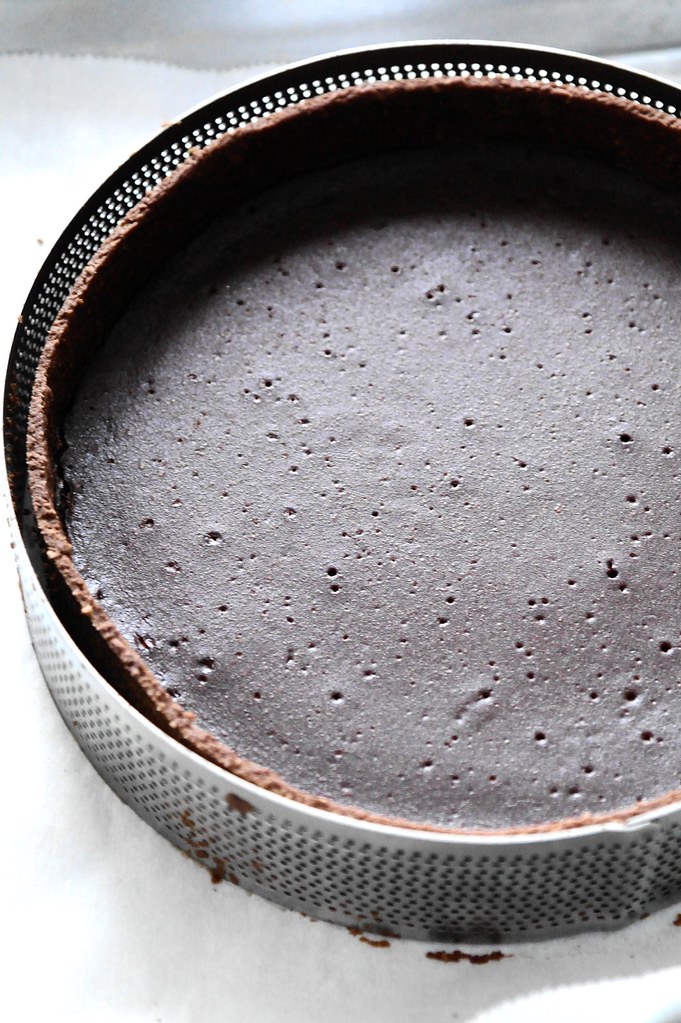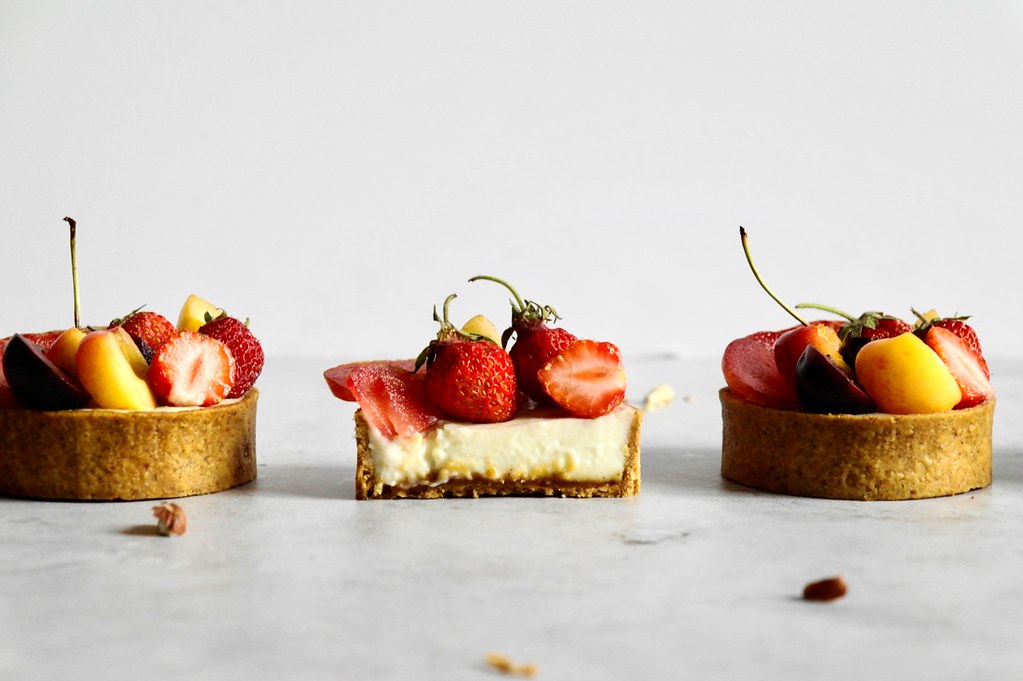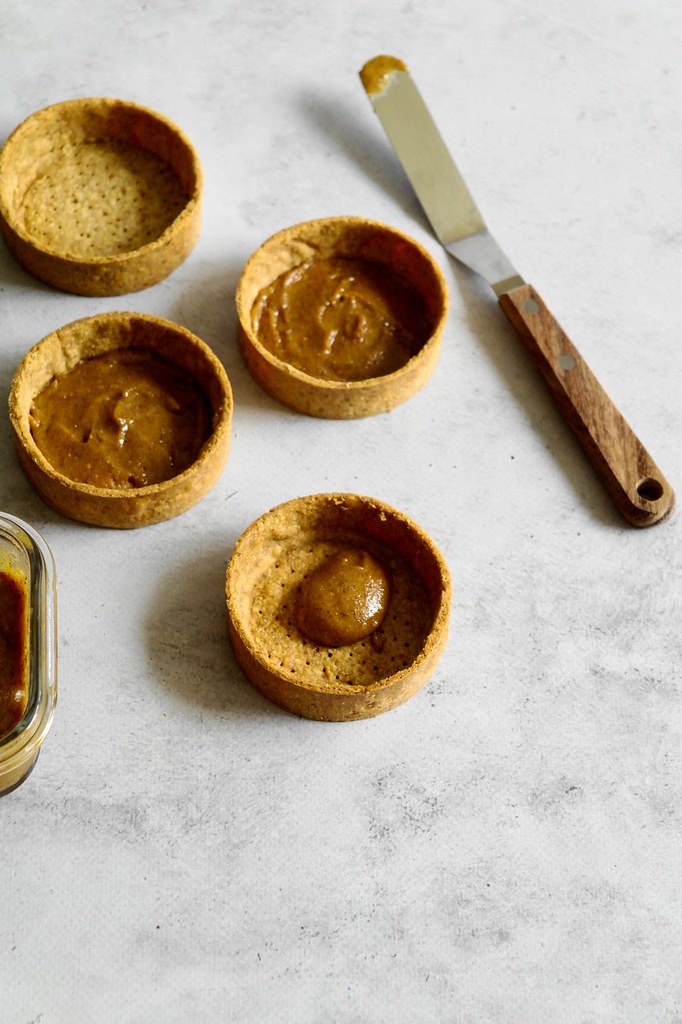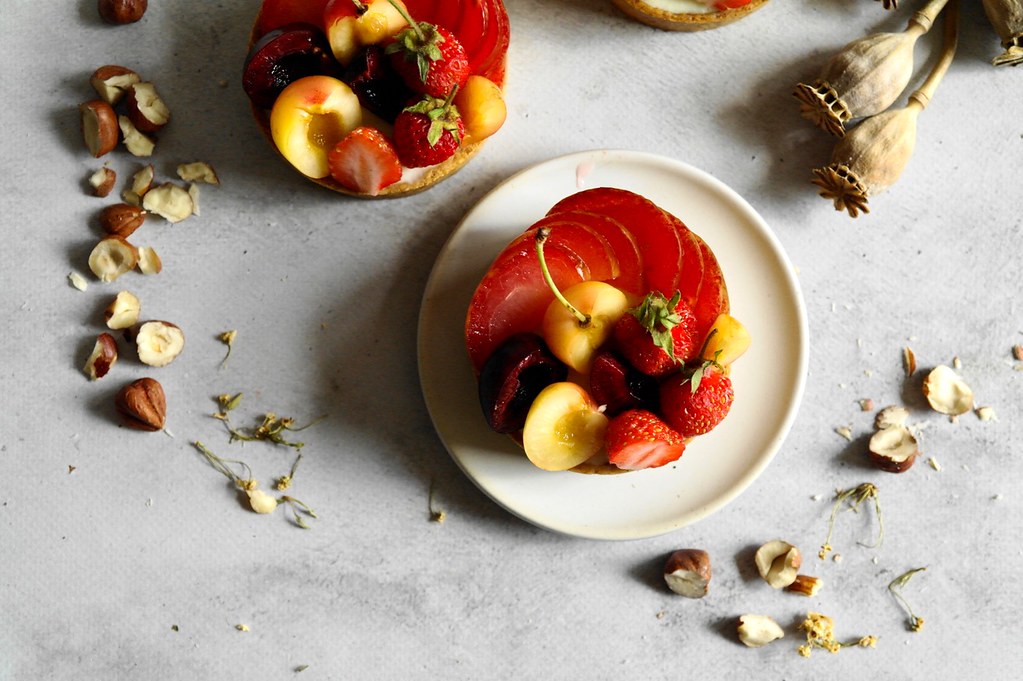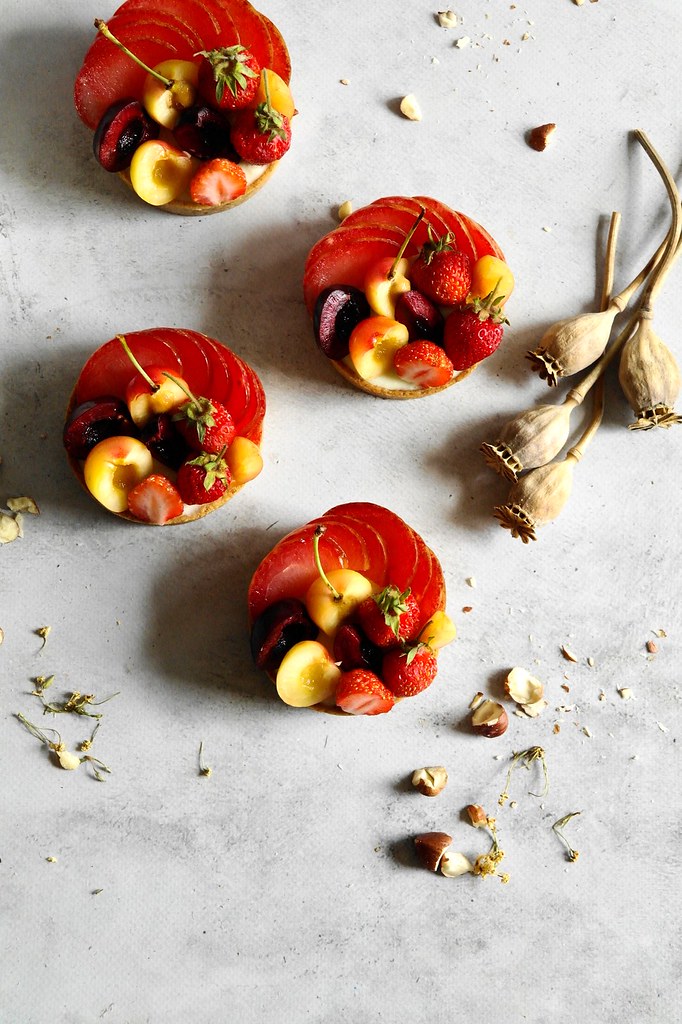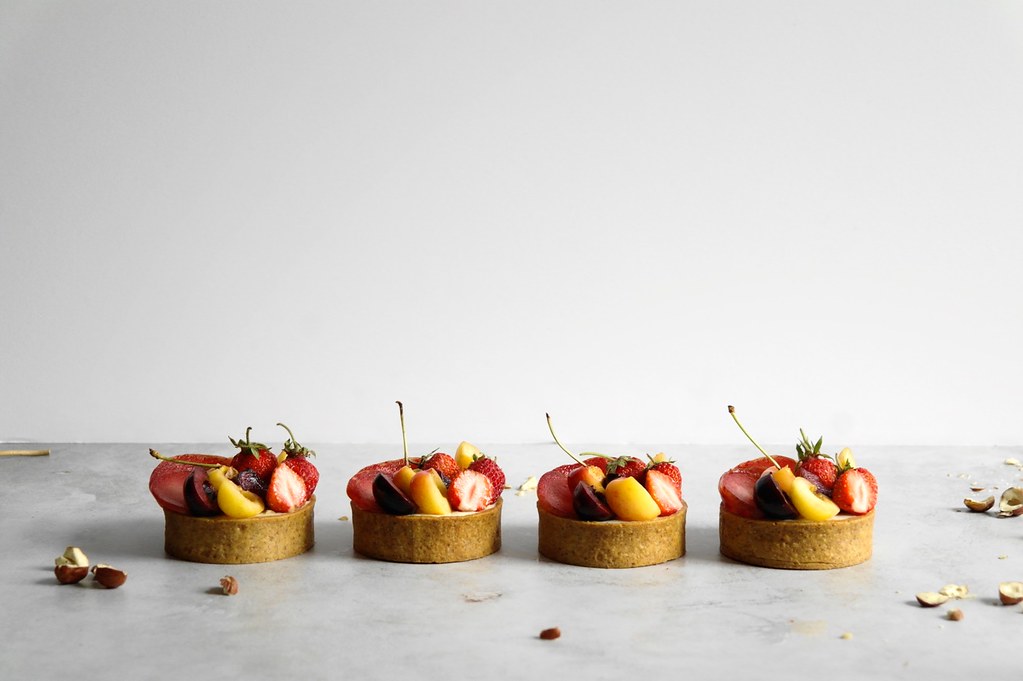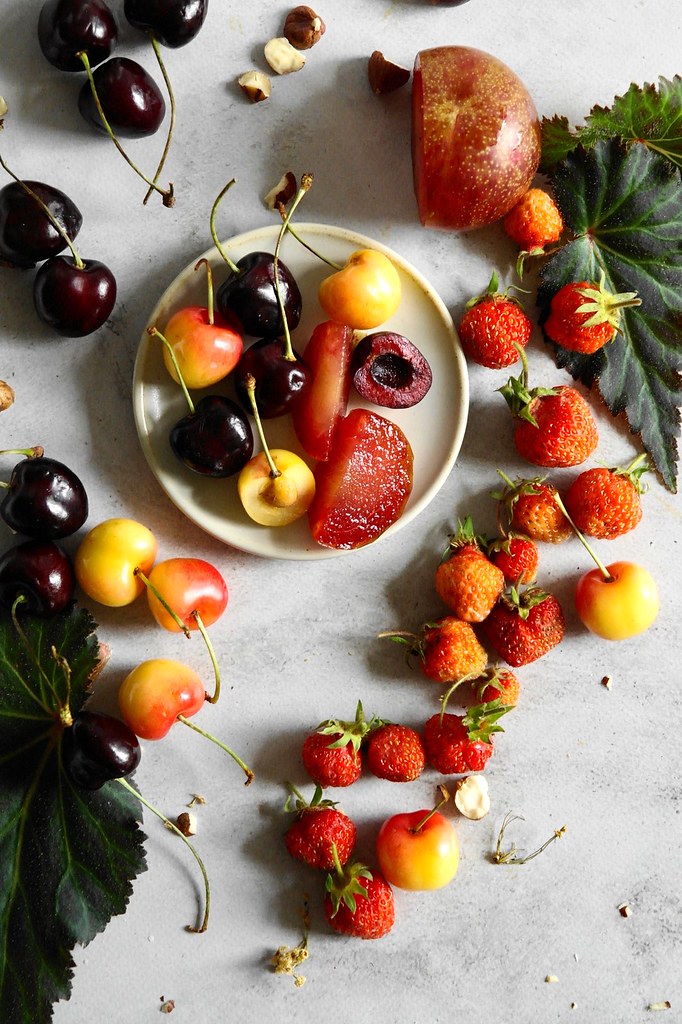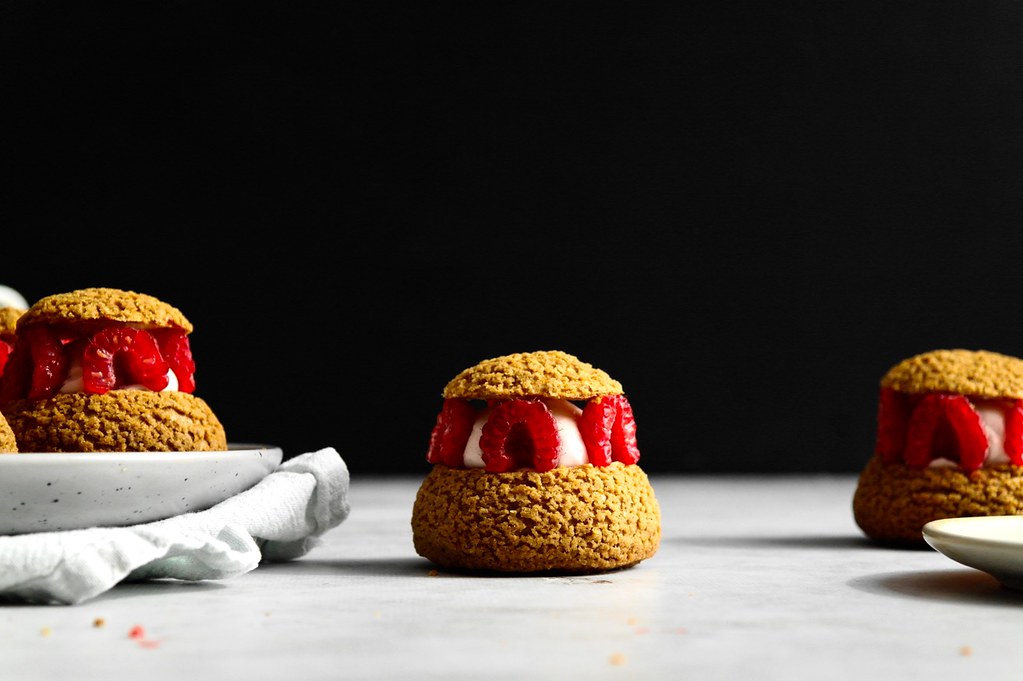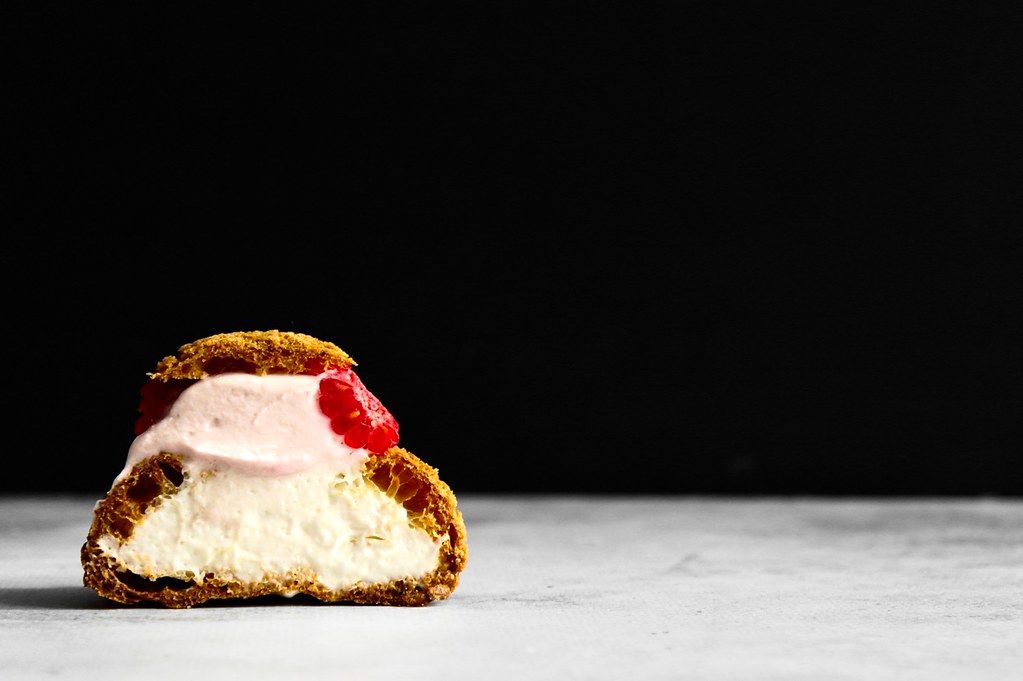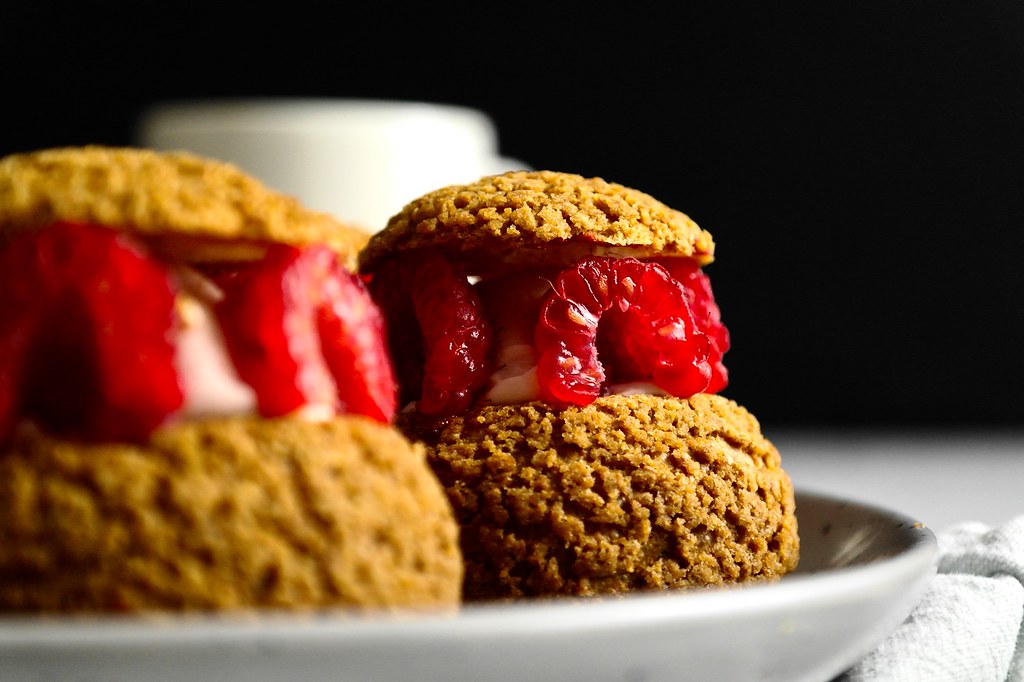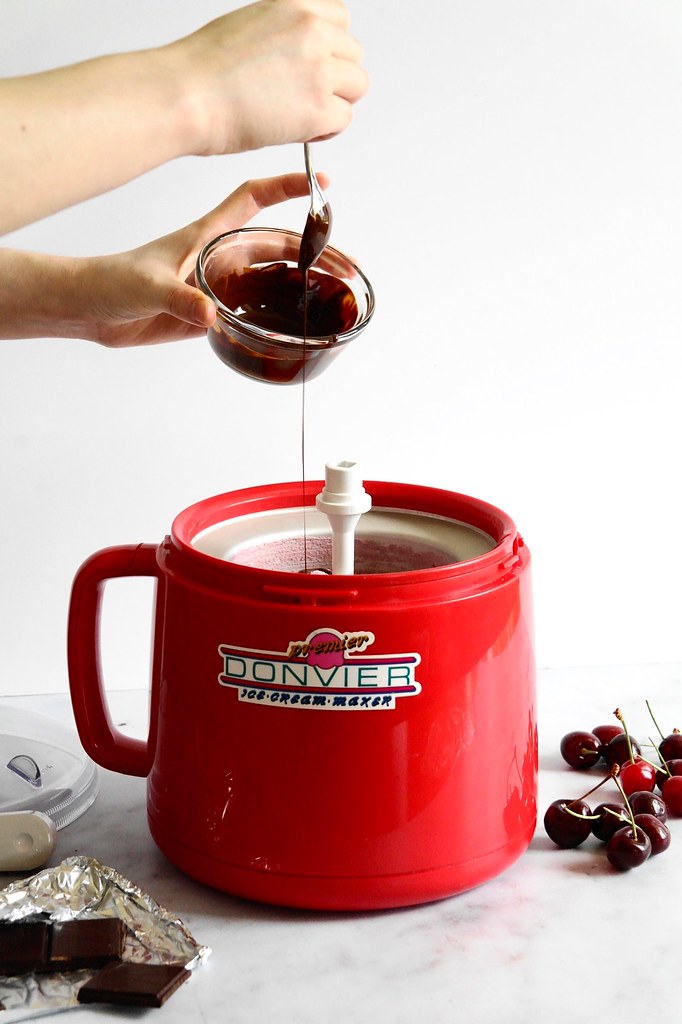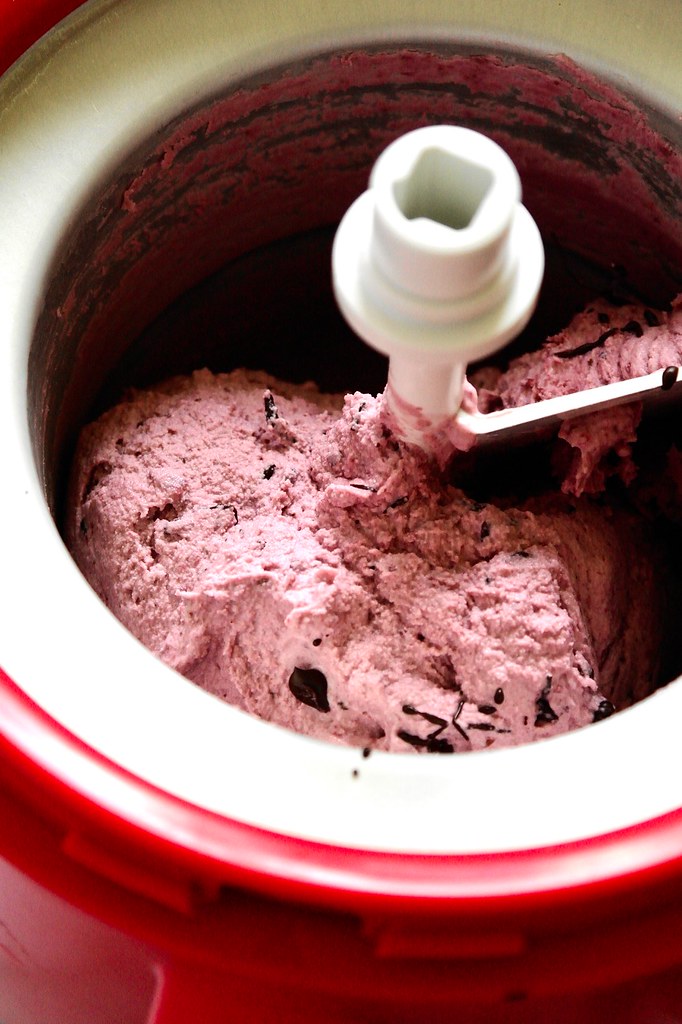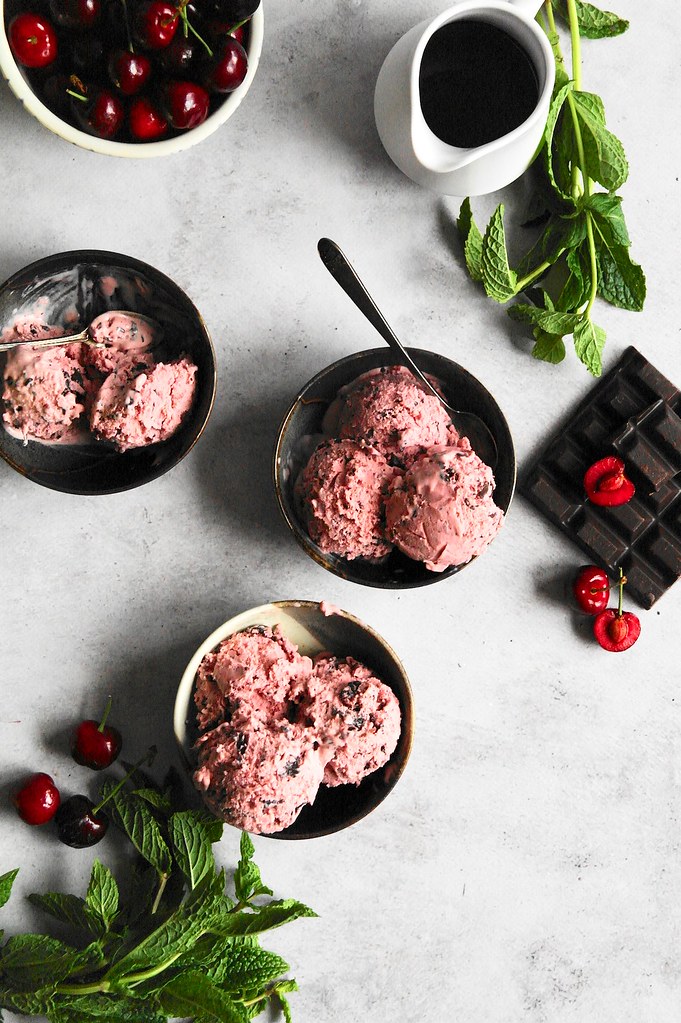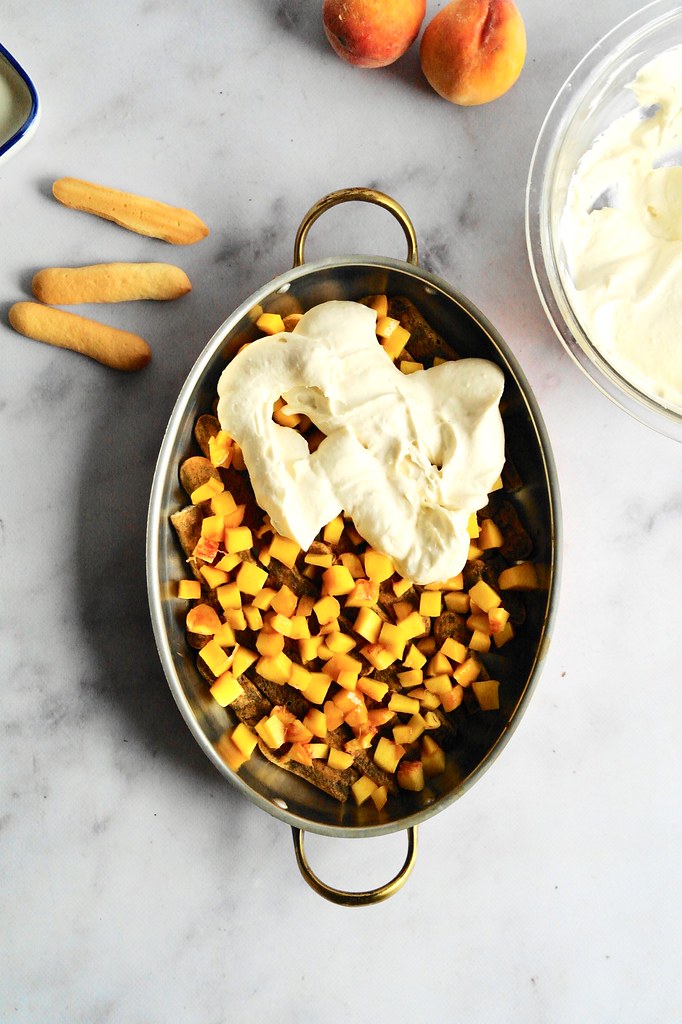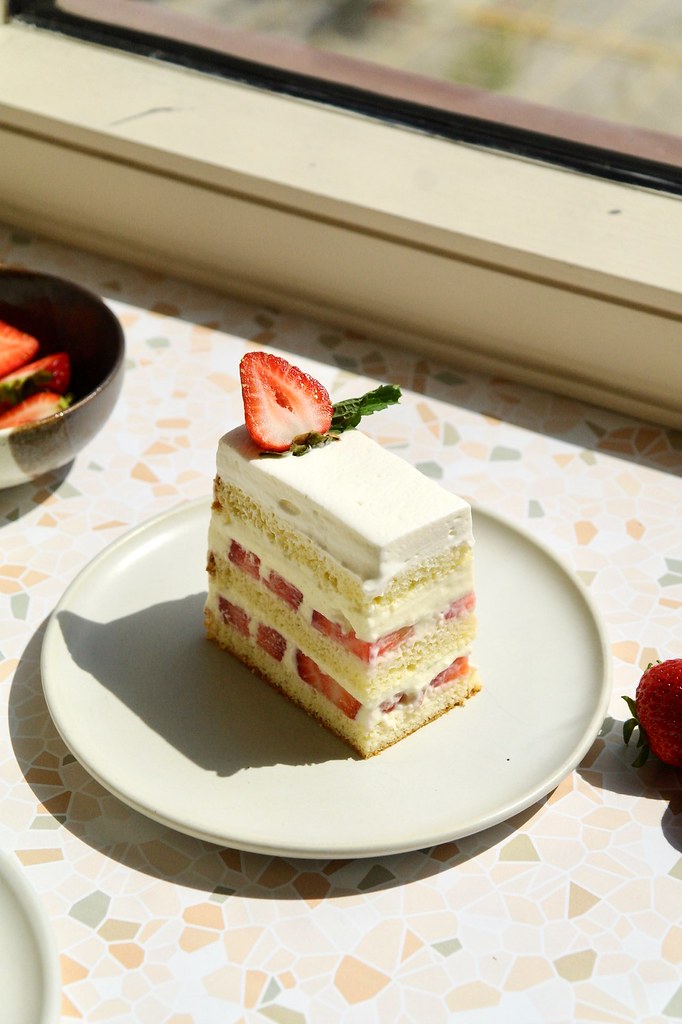
This is a take on a Japanese style strawberry shortcake – sponge cake, cream, strawberries – but layered with coconut milk bavarian cream, strawberries and lychees. Not to miss out on the cream, the whole thing is topped with a nice thick layer of it. Between a milk soak for the cake layers, the mousse, fruit and cream, it makes for a wonderfully moist cake!
I had a lot of fun making it, though there are a couple tricky bits – be sure to let the cake set completely before un-molding and slicing. Use a long serrated knife to slice the cake with a gentle sawing motion in order to work your way through each of the layers.

coconut, lychee & strawberry shortcake
Genoise from Spoonful Passion – you could make do with a 3/4 recipe, but this makes sure you have enough cake in case it turns out a bit stout.
special equipment: square 6″ cake tin 2″ tall with a removable bottom (alternatives could be a 7″ round springform tin)
genoise
- 4 large eggs
- 75g granulated sugar
- 10g honey
- 113g cake flour, sfited
- 18g butter
- 20g milk
coconut bavarian cream
- 180g full fat coconut milk
- 20g granulated sugar (you can use more if you prefer sweeter desserts)
- 3 egg yolks
- 1 3/4 tsp gelatin bloomed in 2 tbsp water
- 180g whipping cream
assembly
- 3 tbsp milk
- a few drops vanilla extract
- about 250g strawberries, hulled and thickly sliced
- about 80g chopped lychees
- an addition ~150g whipped cream, sweetened to taste
- more strawberries to garnish
genoise
Preheat the oven to 350F. Line the tin with parchment paper; an easy way to line a square tin is to use two slings of parchment paper, one going in each direction to cover all the sides.
Whisk together the eggs, sugar and honey in a glass bowl and set over a pot of simmering water. Whisking constantly, heat the mixture until lukewarm to touch or around 100-105F. Pour into the bowl of a standmixer fitted with the whisk attachment.
Place the milk and butter together in a small glass bowl and set in the hot water to warm and melt. (I put a small steaming rack in the bottom of the pot so the water level isn’t too high).
Now return to the eggs: whip on high until the mixture is fluffy but still ribbony. You’ll know it’s ready when you can draw a figure eight with batter flowing from the whisk and it can hold its shape on top of the batter. Whisk on low for one more minute to help reduce any large air bubbles.
Add half of the sifted flour overtop and fold gently until just combined. Repeat with the remaining flour. The milk and butter should be warm by now – remove from the pot and add a dollop of the batter, and mix until cohesive. Add this to the rest of the batter and fold until just combined.
Transfer the batter to the prepared pan. Bake about 35-40 minutes or until browned an inserted skewer is removed clean. Let cool completely.
Once cooled, trim the top of the cake flat and slice into 1cm thick layers – you’ll only need three, but you’ll probably have enough cake to cut four. To do this, I find it’s best to use a ruler to mark on all four sides of the cake and trace a shallow cut. Then, while slicing the cake, you can follow those as a guide to make sure you get even layers.
bavarian cream
Once the mousse is made, it will need to be used soon – keep that in mind before you start and be sure to read ahead to the assembly portion of the recipe so you know what you’ll need.
Whisk together the coconut milk, egg yolks and sugar in a glass bowl and set over a pot of simmering water. Cook, stirring constantly with a rubber spatula, until the mixture reaches about 160F. Remove the bowl from the pot and add the bloomed gelatin, stirring until melted. Then set aside to let it cool to room temperature, giving it an occasional stir so that it cools evenly (this can be sped up by placing the bowl in another bowl of ice water but be careful to stir more often and make sure it doesn’t set completely).
Meanwhile, whip the cream – you can keep it in the fridge until the custard is cool enough. Whisk about one third of the whipped cream into the coconut milk mixture to lighten and thicken it, then add the remaining whipped cream and fold until combined. You’re now ready to assemble the cake.
assembly
Stir together the 3 tbsp milk and vanilla extract in a small bowl.
Place a layer of cake into the bottom of the same tin you baked the cake in. Brush with a bit of the milk. Arrange a layer of strawberry slices over the cake and scatter with half of the chopped lychees. Pour about half of the mousse overtop to cover the fruit. Give the pan a couple a couple taps on the counter to help the mousse settle around the fruit. Now repeat this for another layer of cake, milk soak, strawberries, lychees and the remaining mousse. Put a final layer of cake on top and brush with milk.
There will be a bit of a height left between the cake and the top of the pan – take the whipped cream and spread it into a smooth layer over top the cake flush with the top of the pan. (The amount you need to fill up the pan might vary depending on the thickness of your cake layers and fruit. I found about 150g of whipped cream was sufficient for a 1.5cm layer of cream.) Chill the cake for at least a few hours or preferably overnight to allow the mousse to fully set.
Wrap a towel soaked in hot water around the pan for about 10 seconds, and then push the removable bottom up to unmold the cake. Cut in half and then cut each half into four slices. Top with a strawberry half if desired.







